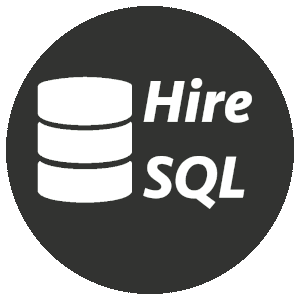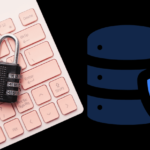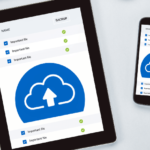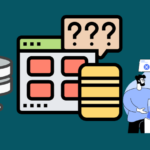 Big Data Analytics with SQL allows for scalable data analysis across distributed systems using SQL-based tools like Hive, Impala, Presto, and Spark SQL.
Big Data Analytics with SQL allows for scalable data analysis across distributed systems using SQL-based tools like Hive, Impala, Presto, and Spark SQL.
In today’s data-driven world, businesses are generating large volumes of data from various sources. To make informed business decisions, it’s crucial to extract valuable insights from this data.
This is where big data analytics comes in, providing the ability to analyze massive amounts of data to unearth hidden insights. SQL is a powerful tool that plays a significant role in big data analytics, making it easier to handle and analyze large datasets.
Big data analytics helps organizations gain a competitive advantage by identifying patterns, trends, and correlations in data that would be impossible to detect manually. With the help of SQL, businesses can process and analyze vast amounts of data efficiently and accurately. This can lead to better decision-making, improved customer satisfaction, and increased profitability.
Key Takeaways:
- Big Data Analytics with SQL is crucial in today’s data-driven world
- SQL is a powerful tool that plays a significant role in big data analytics
- Big data analytics helps organizations gain a competitive advantage
Understanding Big Data Analytics
Big data analytics has become a crucial part of decision-making for businesses. This process involves collecting, storing, and analyzing vast amounts of data to gain valuable insights. Effective big data analytics involves using powerful tools and techniques that can handle large volumes of data.
However, big data analytics also comes with its own set of challenges. The sheer amount of data can be overwhelming, and the process of extracting meaningful insights can be time-consuming. Analytics techniques such as data mining and predictive analytics can help to simplify this process.
One such tool that is commonly used for big data analytics is SQL, or Structured Query Language. SQL is a programming language that is designed for managing and manipulating databases. The language is widely used for querying and analyzing data, making it an essential tool for big data analytics.
SQL is known for its flexibility and scalability, allowing users to handle complex queries and large datasets. It is also an efficient tool for data processing, querying, and aggregation, which are essential components of big data analytics.
SQL Examples for Big Data Analytics
Here’s an example of SQL code that can be used for data analysis:
SELECT COUNT(*) AS total_orders, SUM(order_value) AS total_sales FROM orders WHERE order_date BETWEEN '2021-01-01' AND '2021-12-31';
This query retrieves the total number of orders and the total sales for a particular time period in a dataset called “orders”. This is just one example of how SQL can be used to extract valuable insights from big data.
By leveraging the power of SQL and other analytics techniques, businesses can gain a competitive edge in their respective industries.
SQL for Big Data Analytics
Big data analytics has become an essential tool for businesses to extract valuable insights from their data. SQL, or Structured Query Language, is a powerful programming language widely used for data analysis, including handling large volumes of data. SQL has become an important tool for big data analytics due to its flexibility, scalability, and ability to handle complex queries.
It plays a critical role in big data analytics as it enables data processing, querying, and aggregation. With SQL, businesses can efficiently manage data and extract valuable insights, allowing them to make informed decisions. SQL is also helpful in handling complex queries that require joining different datasets, filtering, sorting, and grouping data.
It provides numerous benefits when it comes to big data analytics. It is highly flexible, allowing businesses to customize queries to suit their specific needs. SQL is also scalable, which means it can handle large volumes of data, making it ideal for big data analysis. Additionally, SQL enables businesses to analyze data in real-time, providing instant insights for quick decision-making.
It’s a must-have tool for businesses looking to leverage big data analytics. By using SQL for big data analytics, businesses can gain valuable insights that can help them make informed decisions. SQL is a highly customizable and scalable tool that can process complex queries and handle large volumes of data efficiently.
Example of SQL Code for Big Data Analytics
SELECT product_name, SUM(quantity) AS total_quantity_sold
FROM sales_data
GROUP BY product_name
HAVING SUM(quantity) > 1000;This SQL code queries the sales_data table to determine the total quantity of products sold for each product. The code groups the results by product name and only includes products with more than 1000 units sold.
Key Components of Big Data Analytics with SQL
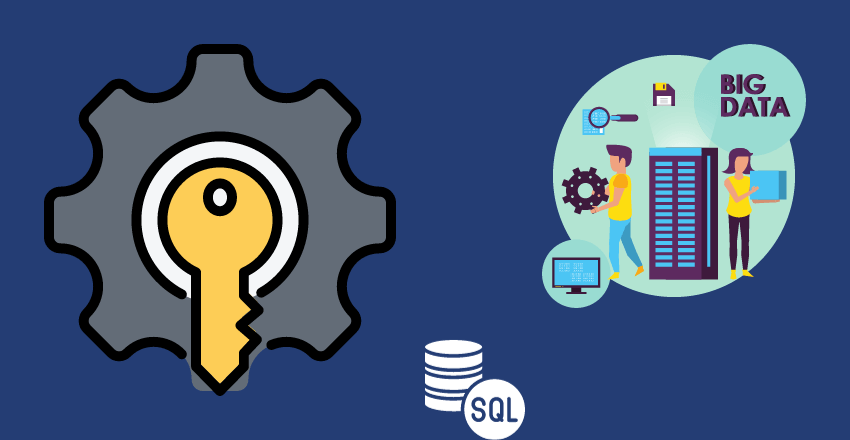
Successful big data analytics with SQL requires several key components to be in place. In this section, we’ll explore each of these components in detail, starting with:
Data Ingestion and Storage
The first step in any big data analytics project is to collect and store large volumes of data. This involves using specialized tools to capture data from various sources and store it in a central location. SQL-based databases like Apache Hadoop and Apache Spark are commonly used for this purpose. These databases are designed to handle massive amounts of unstructured and structured data and can scale horizontally to accommodate growing data volumes.
Data Preprocessing
Once the data is stored, the next step is to preprocess it to make it ready for analysis. This involves cleansing, filtering, and transforming the data to remove any irrelevant or redundant information. SQL queries can be used for data preprocessing tasks like filtering, sorting, and joining datasets. Additionally, tools like Apache Spark provide pre-processing capabilities like data wrangling and data cleaning.
Visualization
After preprocessing, the data is ready for analysis. However, before diving into complex queries and analytics techniques, it’s essential to visualize the data to gain insights quickly. Tools like Tableau and Power BI can be used to create visualizations like graphs, charts, and dashboards to help decision-makers understand the patterns and trends in the data better.
Analytics and Querying
The next step is to start analyzing the data using SQL queries and analytics techniques. Common techniques include aggregating, merging, and grouping the data to identify patterns and trends. SQL provides a flexible and scalable language for querying large datasets and supports complex operations like joins, subqueries, and window functions.
Real-Time Analytics
Real-time analytics is another critical component of big data analytics, allowing businesses to monitor and analyze data as it’s generated. Tools like Apache Kafka and Apache Storm can be used to perform real-time analytics on large volumes of data, providing continuous insights into the business operations.
Code Example
Here’s an example of using SQL to join two tables for data analysis:
SELECT customers.name, orders.order_date, orders.order_total FROM customers JOIN orders ON customers.customer_id = orders.customer_id WHERE orders.order_date BETWEEN '2020-01-01' AND '2020-12-31';
This query joins the customers and orders tables on the customer_id field and filters the results to only include orders made between January 1st, 2020, and December 31st, 2020.
SQL Techniques for Data Analysis
SQL is a powerful tool for analyzing big data, providing a range of techniques to extract insights from vast datasets. Here are some of the key techniques:
- Aggregates: Aggregates are functions that summarize data, such as calculating averages or totals. They are ideal for extracting high-level information from large datasets.
- Group by: Group by is a clause that groups rows in a table based on a specified column. It’s useful for analyzing data by specific criteria, such as by region or product type.
- Window functions: Window functions operate on a set of rows and return a result for each row based on a specific calculation. They are great for performing complex calculations on large datasets, such as calculating moving averages.
Here’s an example of using SQL to calculate the average sales by region:
Region Average Sales North 5000 South 6000 East 7000 West 5500
In this example, we used the group by clause to group sales data by region, and then used the average aggregate function to calculate the average sales for each region.
By using these powerful SQL techniques, businesses can extract valuable insights and make data-driven decisions that can impact their bottom line.
Leveraging SQL for Advanced Analytics

SQL is not just a tool for data processing and aggregation. It can also be used to perform advanced analytics tasks like predictive modeling and machine learning.
One common technique for predictive modeling is regression analysis. This involves fitting a mathematical model to the data and then using that model to make predictions. SQL can be used to perform regression analysis by fitting a linear regression model to the data.
Another approach to predictive modeling is decision tree analysis. This involves building a decision tree that represents the relationships between the variables in the data. SQL can be used to implement decision tree analysis by constructing a series of nested IF statements.
Machine learning is another area where SQL can be used for advanced analytics. One common machine learning technique is k-nearest neighbors (KNN) classification. This involves classifying data points based on their proximity to other data points in the dataset. SQL can be used to perform KNN classification by calculating the distances between data points and then using that information to classify the data points.
Data mining is yet another area where SQL can be used for advanced analytics. This involves discovering patterns and relationships in large datasets. SQL can be used to perform data mining by using techniques like clustering and association rule mining.
Overall, SQL is a powerful tool for advanced analytics. By leveraging SQL, businesses can gain valuable insights from their data and make data-driven decisions to gain a competitive edge in their respective industries.
Example:
Suppose a company wants to predict the sales revenue for the upcoming year based on historical sales data. They can use SQL to perform regression analysis on the data, fitting a linear regression model to the sales data. They can then use this model to predict the sales revenue for the upcoming year based on current market conditions.
Best Practices for Big Data Analytics with SQL
Big Data Analytics with SQL is a powerful tool for organizations that want to gain insights into their business data. However, to make the most of SQL-based analytics solutions, it’s important to follow best practices that ensure data accuracy, performance, and governance.
Optimizing SQL Queries
One of the key considerations for SQL-based big data analytics is query performance. SQL queries can be slow when dealing with large datasets, so it’s important to optimize queries for speed. Consider using techniques like indexing, partitioning, and query optimization to improve query performance.
Handling Large Datasets
SQL is well-suited for handling large datasets, but it’s important to plan for scalability. Ensure that your SQL infrastructure is designed to scale horizontally and vertically as your data volume grows. This may involve using distributed databases, data sharding, or data replication.
Ensuring Data Accuracy and Integrity
Data accuracy and integrity are critical for SQL-based big data analytics. Ensure that data is cleansed, preprocessed, and validated before analysis. This may involve techniques like data profiling, data quality rules, and data validation checks.
Data Governance and Security
Data governance and security are also important considerations for SQL-based big data analytics. Establish clear policies and procedures for data access, usage, and security. Ensure that your SQL infrastructure is compliant with industry standards and regulations.
By following these best practices, organizations can leverage SQL-based big data analytics solutions to gain valuable insights into their business data. Talk to HireSQL about how their dedicated SQL developers can help you implement and optimize your SQL-based analytics solutions.
Example Applications of Big Data Analytics with SQL
Big data analytics with SQL has become an essential tool for organizations across various industries, providing valuable insights to enable data-driven decision-making. Let’s take a look at some examples of how SQL-based big data analytics has been implemented:
| Industry | Use Case | Benefits |
|---|---|---|
| Retail | Customer Segmentation | Improved targeting of marketing campaigns, increased customer retention |
| Finance | Risk Analysis | Reduced exposure to financial risks, improved compliance |
| Healthcare | Medical Research | Accelerated drug discovery, improved patient outcomes |
These are just a few examples of how SQL-based big data analytics can provide actionable insights to organizations. By leveraging SQL and analytics techniques, companies can make informed decisions that can ultimately lead to increased profitability, improved efficiency, and enhanced competitiveness.
Conclusion
Harnessing the power of SQL for big data analytics is essential for organizations to make informed business decisions and remain competitive.
At HireSQL, our dedicated SQL developers are skilled in using various analytics techniques to uncover valuable insights from your data. Contact us today to see how we can help you take advantage of big data analytics with SQL.
FAQ
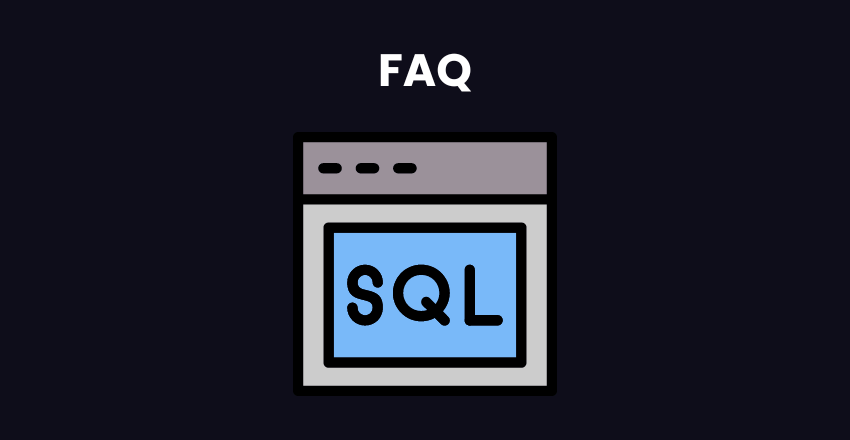
Q: What is big data analytics?
A: Big data analytics involves the process of collecting, storing, and analyzing large volumes of data to extract valuable insights and make informed business decisions.
Q: Why is SQL important for big data analytics?
A: SQL is important for big data analytics because it provides the ability to handle complex queries, scalability, and flexibility required to analyze and process large datasets efficiently.
Q: What are the key components of big data analytics with SQL?
A: The key components of big data analytics with SQL include data ingestion, storage, data preprocessing, and visualization. SQL can be used to perform various data analysis tasks like filtering, sorting, and joining datasets.
Q: What are some SQL techniques for data analysis?
A: Some SQL techniques for data analysis include aggregates, group by, and window functions. These techniques can be used to extract actionable insights from big data.
Q: How can SQL be leveraged for advanced analytics?
A: SQL can be leveraged for advanced analytics by using concepts like predictive analytics, machine learning, and data mining. SQL can be used to build models, analyze patterns, and make data-driven predictions.
Q: What are some best practices for big data analytics with SQL?
A: Some best practices for big data analytics with SQL include optimizing SQL queries for performance, handling large datasets, ensuring data accuracy and integrity, and focusing on data governance and security.
Sarah is an accomplished author, esteemed for her expertise in the field of data science and her engaging written works that cater specifically to the data industry. Residing in the vibrant city of London, she embarked on an academic journey at Cambridge University, where she immersed herself in the world of mathematics. This foundational education formed the bedrock of her illustrious career.
Driven by a desire to broaden her horizons, Sarah sought new challenges and opportunities, leading her to embrace a pivotal role at NetApp, a renowned data storage consultancy firm. In this capacity, she thrived in the dynamic landscape of data architecture, devising innovative strategies to optimize data storage, retrieval, and management for a diverse range of clients. Sarah’s intricate understanding of the intricacies of data systems and her ability to craft tailor-made solutions earned her accolades and solidified her reputation as a sought-after industry expert.
Beyond her professional pursuits, Sarah gracefully balances her roles as a devoted mother and an accomplished equestrian. She finds immeasurable joy in nurturing her daughter, guiding her through the intricacies of life, and instilling a love for knowledge and creativity. Sarah’s dedication to both her family and her career exemplifies her unwavering commitment to excellence in all facets of life.
